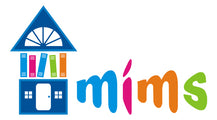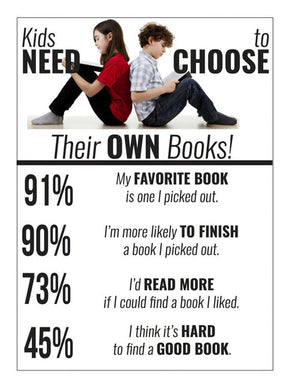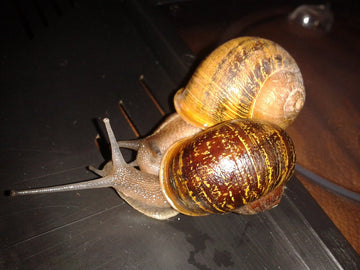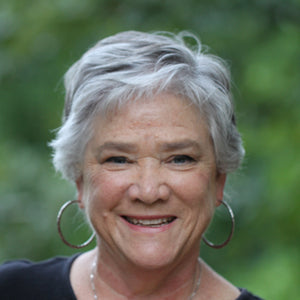How Do Kids Choose Books?
10 Strategies to Help Kids Choose Books
Pretend you’re a kid walking into your school’s library. Now, pretend you have the task of choosing a good book. Information overload takes over and in fact, the overwhelming number of books could mean you’d freeze up and choose nothing.
In a recent survey on MimsHouseBooks.com, teachers were asked, “What is the biggest challenge you face when you try to get kids to read more books?” Not surprisingly, 38% said kids don’t have enough time. Kids are scheduled with sports, electronics compete for their time, and homework schedules are heavy; in school time is taken up with subject matter or test prep. More surprising, 45% reported that students have a hard time choosing a good book.
Yet, 91% of kids say their favorite books are ones they have picked out themselves. And 90% say they are more likely to finish reading a book that they’ve picked out for themselves.
It’s clear that teachers and librarians need to take a new look at how we teach kids to choose a book to read. In fact, 73% of kids say they would read more if they could find a book they like to read.
When faced with too many books, how do kids choose a book?
In light of these statistics, I looked at psychological studies on making choices, especially regarding information overload.
Early studies of the psychology of making choices said that the more items to choose from the harder the choice. For example, there’s the well-known jelly study.
“They had 348 different kinds of jam. We set up a little tasting booth right near the entrance of the store. We there put out six different flavors of jam or 24 different flavors of jam, and we looked at two things: First, in which case were people more likely to stop, sample some jam? More people stopped when there were 24, about 60 percent, than when there were six, about 40 percent. The next thing we looked at is in which case were people more likely to buy a jar of jam. Now we see the opposite effect. Of the people who stopped when there were 24, only three percent of them actually bought a jar of jam. Of the people who stopped when there were six, well now we saw that 30 percent of them actually bought a jar of jam. Now if you do the math, people were at least six times more likely to buy a jar of jam if they encountered six than if they encountered 24.”
24 choices: 60% stopped to sample. 3% bought. 1.8 sales/100 customers
6 choices: 40% sampled; 30% bought. 12 sales/100 customers
However the idea that the sample size determines the rate of choices has been reviewed and found lacking.
Benjamin Scheibehenne, Rainer Greifeneder, and Peter M. Todd (“Can There Ever Be too Many Options? A Meta-Analytic Review of Choice Overload. Journal of Consumer Research, Inc. Vol 37, October 2010) did a meta-analysis of a number of studies that looked at choice overload. They found that the number of choices wasn’t the key factor. Instead, it’s more nuanced. While the whole area needs more research and study, there are some ideas that could help us as we help students choose a book. I’m extrapolating many of these ideas because the studies weren’t specifically looking at students choosing books. However, these ideas give us places to start in helping students find a good book.
| CHOOSE BOOKS YOUR WAY - MIMS HOUSE BOOKS CHARACTER QUALITIES | SUBJECTS READING LEVELS |
How can you make it easier for kids to choose a good book: Set Up the Choices to Avoid Information Overload
Some situations make information overload more likely.
Lack of familiarity with choice assortment. For young students, this is certainly their state when they enter a library. Everything is unfamiliar and they have no preferences to help them choose a book. Even older students, if they have little experience with books at home, will find the library unfamiliar.
There’s no obvious dominant choice. Ever wonder why Wimpy Kid gets checked out so much? It’s because it’s the default, the obvious choice. When there’s no obvious choice, though, students can fall into a choice overload. Try making an alternate book the obvious choice.
Too many choices. It is true that sometimes there can be too many items to choose among. The problem with this assumption is the question of “how many is too many?” In general, familiarity with the choice assortment means a larger group can be offered. For younger students and when you introduce a new genre, narrow the choices. For older students looking at familiar genres, widen the choices.
What helps students choose a good book? Categories!
Before a student steps into the library, it matters how you organize your library and how you display the books.
Categorize the Choices. A well-organized library facilitates the decision making process for students. When books are categorized, the cognitive burden of choosing is less. Every librarian understands this! It’s helpful to separate fiction from non-fiction, picture books from novels, and so on. Teaching the Dewey Decimal system of categorization helps students choose books because they narrow the choices to a pre-defined set.
But you can also go farther, especially in presenting books for a certain unit of study. Books can be categorized by genre, age level, author, illustrator, amount of illustrations, medium (ebook, print, audio), and so on.
Avoid Difficult Trade-offs. Don’t present books that are too similar. So, three Harry-Potter lookalikes would make it difficult for a student to choose. When the choice is between items that are too similar, the process can become one of difficult trade-offs. These choices can affect satisfaction, regret and motivation. Because there’s always another book to read next week, the regret might be ignored. But satisfaction and motivation need to be considered. Presenting books that display a wider variation would help students make the choices easier. Instead, of a displaying three Harry-Potter lookalikes, you might display together one fantasy, one contemporary and one historical book.
To address the question of satisfaction and regret, always remind the student that if they don’t like this book, it’s not a big deal. They can always check out a different one next time.
These two recommendations can seem to counteract each other: narrow the choices, but don’t present items that are too similar. But remember that simply by setting up a book display, you’ve narrowed choices. If the display forces too narrow a category, though—only Harry Potter look-alikes—it’s hard for students to choose because they are making trade-offs. Make sure books are presented in useful categories, probably dependent on the classroom topics or goals. If the class is studying pets, it won’t be helpful to display choices such as ebooks v. audio v. print books. Instead, it would be helpful to pre-categorize choices into books about cats, dogs, hamsters and so on.
Information Overload. While the number of choices alone wasn’t significant in the studies analyzed, the amount of information was important. Choice overload is a subset of information overload. When presenting books, refrain from presenting everything about the books from which a student can choose. Present enough information to make the choices clear, but not enough to overload the student.
For example, you might discuss the differences in the main characters. The One and Only Ivan is about a gorilla who had to live at a shopping mall for years by himself. Harry Potter is about an orphaned boy who becomes a famous wizard. Wonder is about a boy with a strange disease that leaves him with a deformed face.
Or, for younger classes, you may want to set aside a small bookshelf of books about pets, instead of directing them to the entire shelf based on the Dewey Decimal system.
Time Pressure. The studies also showed that when decision makers were rushed, they tended to be less satisfied with their choices. Within the context of a scheduled library hour, schedule enough time for students to choose a book.
How do kids decide on a good book? Decision Strategies
Once the librarian has organized the choices, the student still must choose. How can we make it easier for them?
Relative v. Absolute Evaluations. When choosing a book, students will often compare a book to a group of other books. Some studies indicate the importance of the sequence of the decision making process. Should students narrow options first and then choose; or should they choose a specific book first and then compare it to all the other choices?
People tend to be happier with their choices when they narrow options first. This relates back to the idea of categorization of choices, which is a way of narrowing options. In other words, teaching kids to categorize books is a helpful skill. There are a couple ways to bring this to the process of choosing a book.
Students will be more satisfied in these situations:
- The student decides to read a humorous story; within the category of humorous stories, s/he decides to read Captain Underpants.
- The student decides to read a Rick Riordian book. S/he decides to read Percy Jackson and the Olympian series. Actually, if Book 1 is good, then the decision making process is even easier because they are dealing with a known quality. Book 2 is the likely choice. Series actually facilitate happy readers because it alleviates the decision making process.
In other words, help students to verbalize what sort of book they are looking for. Then present a narrow choice within those parameters.
Good Enough v. Best. Another question is whether a student is looking for a book that is “good enough,” or something that is the “best.” Those looking for the Best want a large assortment of books, but even then have trouble deciding. Talk to students about finding a good book and not worrying about finding the best book. This could be a problem with students who resist reading because it’s a waste of time or they just don’t like reading. For them, a wide variety of experiences can teach them that a Good Book can be enjoyed and they don’t necessarily have to have the Best Book.
Choice Justification. Another area studied is whether a student must take personal responsibility for a choice. When people are asked to justify a choice, it’s more difficult to make a decision. It’s especially hard when choices are too similar and sorting out the deciding factor is too subtle. In other words, a difficult question for kids is this: “Why did you choose this book?” Even worse is to be asked, “Why did you choose this book instead of that one?” In those cases, students have trouble analyzing and verbalizing their choice. If they know the question is coming, it’s the hardest of all.
Peer pressure enters in here, because when a student carries around a book, friends will inevitably ask, “What are you reading?” Justifying a certain book to themselves can be hard, but justifying it to friends is even worse. No wonder students stick to the most popular books without branching out.
What if we teach kids how to anticipate and deal with that question? Help students to find ways to make their choices look admirable:
- “I’m taking a chance by reading something a bit different.”
- “I’m reading outside my normal genre, just to stretch a bit.”
- “It’s a new author for me. I’m not sure I’ll like it, but I’m the kind of person who likes to take risks sometimes.”
By giving them strategies and models of how to discuss choices, it could ease the peer pressure and extend choices.
How Do Kids Choose Great Books: Summary of Strategies
When faced with a choice of too many items, there are several strategies that seem to work. Teaching all three strategies over the course of a year would help expand the students options for finding a good book.
- Find and accept the first option that exceeds our expectations. A student may decide that s/he wants a funny book that is short. As soon as s/he finds a short, funny book, s/he decides to check it out.
- Eliminate, using some criteria. If a student is considering three books and only one has black-and-white illustrations throughout, s/he might eliminate the other two because s/he wants some illustrations to help him/her understand the text better.
-
Default. As we said before, a default option often helps students make choices. This strategy has worked well for book clubs in the past. They shipped a certain book UNLESS you told them different. What if we set up a list of reading books for students? If they want to choose something else, that’s fine. But if not, this is the default book for them for today. It would be an interesting idea to try!
Another way students discover the default is my popular opinion and word-of-mouth: everyone in 6th grade is reading Wimpy Kid; therefore, I must read it.
Helping students make choices about books is crucial for education today. We need a wide variety of techniques and strategies for helping them make those choices. Which of these strategies works best in your school?
Other recommended reading
- Scholastic The Kids & Family Reading Report: Fifth Edition In fall 2014, Scholastic, in conjunction with YouGov, conducted a survey to explore family attitudes and behaviors around reading books for fun.
-
2016 What Kids Are Reading Report
During the 2014–2015 school year, 9.8 million students from 31,327 US schools read over 334 million books and nonfiction articles, per data captured by Accelerated Reader 360TM. Search for the books kids read most below.





